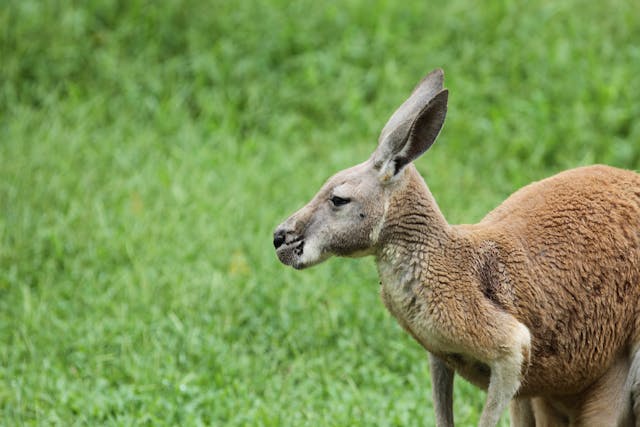A device designed to prevent kangaroos from jumping in front of vehicles will be tested with moving cars after after receiving approval from a university.
The RooBadge device, developed by Volkswagen Australia and the DDB Group in consultation with the University of Melbourne and wildlife organisation WIRES, will move into stage-four trials after approval from the university’s ethics department.
The technology will be fitted to moving vehicles for the first time and tested in controlled conditions near wild animals.
If successful, the device could help to protect wildlife and improve vehicle safety, with research showing kangaroos make up the largest number of animal collisions on Australian roads.
Volkswagen’s RooBadge is a circular device developed over three years that can play audio to deter kangaroos from approaching vehicles.
But University of Melbourne associate professor Graeme Coulson said creating sounds that could send kangaroos away had proven incredibly challenging and the group would test a mix of natural and artificial audio, including a high-frequency signal, to deter them.
“We have worked on sounds that will be meaningful to eastern grey kangaroos – things like dingo calls, alarm calls made by birds and the alarm thumps that kangaroos make to warn each other,” he said.
“We will then be able to tweak the sound for other species.”
Mr Coulson said other breeds of kangaroos, such as red and western grey species, were likely to respond to different noises and the device would connect to an app to determine its location play noises designed to deter the species most likely to be nearby.
“A lot of the current deterrents simply don’t work because they don’t mean anything to the kangaroos,” he said.
“They don’t convey fear, they don’t direct them to do what we want them to do.”
Helena Bender, a senior lecturer at the university’s environmental social sciences department, said ensuring the sound could be easily heard by kangaroos was also tricky.
“It’s very difficult to project a sound ahead of the vehicle,” Dr Bender said.
“(And) it needs to be a frequency that the animals are sensitive to.”
Volkswagen Group Australia communications manager Daniel DeGasperi told AAP the company had made significant investments in the technology and was excited to embark on the next phase of testing after trialling audio deterrents from static devices.
“Almost every driver in Australia has been affected by a roo or knows someone who has,” he said.
“This could be a real road safety improvement for Australia and it has the interest of our parent company in Germany because … they have deer and other wildlife where this technology could be applicable.”
Mr DeGasperi said it was still too early to say when the RooBadge could go into production but the vehicle brand was committed to developing the technology.
Research from insurance firm AAMI last year showed kangaroos were the animals most commonly involved in collisions with cars, with winter and dusk identified as the riskiest times for accidents.
Jennifer Dudley-Nicholson
(Australian Associated Press)




